Why automating parts ordering is critical to construction's growth
It's time for a change: Legacy parts procurement workflows are costing heavy civil contractors billions in waste each year.
Equipment dealers need to learn from the macro technology trends in our consumer lives to digitize construction fleet management and improve productivity.
By Luke Powers
Technology adoption moves slowly … until it doesn’t.
For decades, conventional wisdom and inertia once made us believe that taxis were the primary ways to get around our major metropolitan areas. But these transportation methods often provided little flexibility, unclear pricing, and uncertain availability. However, we were at their mercy.
Now, we can book a ride with a well-reviewed stranger in seconds on Lyft’s app.

Without a doubt, in order for technology to take off, it requires a timely convergence of software development, creativity, and unlocked supply and demand forces. In Lyft’s case, tech tapped into an unrealized mass of willing and able drivers desiring extra income, and — as it turns out — we have no problem getting in a car with a stranger behind the wheel, as long as the reviews are good and the transaction is transparent and seamless.
Just as technology has evolved to bond our physical and digital worlds in our consumer lives, we need to consider how it will ultimately impact the construction industry as a whole, and more specifically, construction fleet management.
So what can we learn from macro technology and construction trends that will help us become better equipment dealers?
My family’s business has been a dealer for Genie Industries since 1976 — the first one in the Midwest in fact. As the MEWP industry grew, so did customer expectations. The ever-changing needs of contractor job sites demanded new and varied machine capabilities. With each passing year, machines were built to reach higher and lift more. These once straightforward pieces of equipment turned into increasingly intricate systems of components and automation.
The machines’ development brought embedded chips and a burgeoning parts list. The effects of their inherent complexity, of course, naturally rolled downhill from the manufacturers to dealers to the end-user equipment owners. Fixing our machines became a more complicated exercise. And so much depends on the uptime of fleets on job sites.
According to a former Skanska USA foreman, a top 10 contractor in the U.S., the company routinely tells their employees that downtime for any given machine costs the company $90K a day per machine, when accounting for idled labor and job site delays.¹
Construction jobs across the world depend on their equipment uptime to get their work done on schedule. If a machine goes down, part of the job or even the entire job can shut down. Contracted laborers end up standing around on the clock with nothing to do.
This creates a ripple effect, where subsequent deadline-dependent work has to be pushed back. People are upset. And the more downtime there is, the less profit can be made.
Since the dawn of civilization, construction has been — and always will be — a cornerstone industry. In fact, according to the Associated General Contractors of America, the construction industry builds $1.3 trillion worth of structures each year in the U.S.²
And yet, we have a chronic productivity issue:
The global construction industry is a $10-trillion market that employs one in 14 workers globally. Despite this, it has seen a decrease of 23% in gross value added per hour worked since 1990.³
Gross value added per hour worked, as defined by the Organization for Economic Cooperation and Development (OECD) in Paris, is:
Labor productivity per hour is defined as real output (gross value added) divided by total hours worked by all persons in employment.⁴
As a comparison, here’s how manufacturing and agriculture have performed over the same time period:
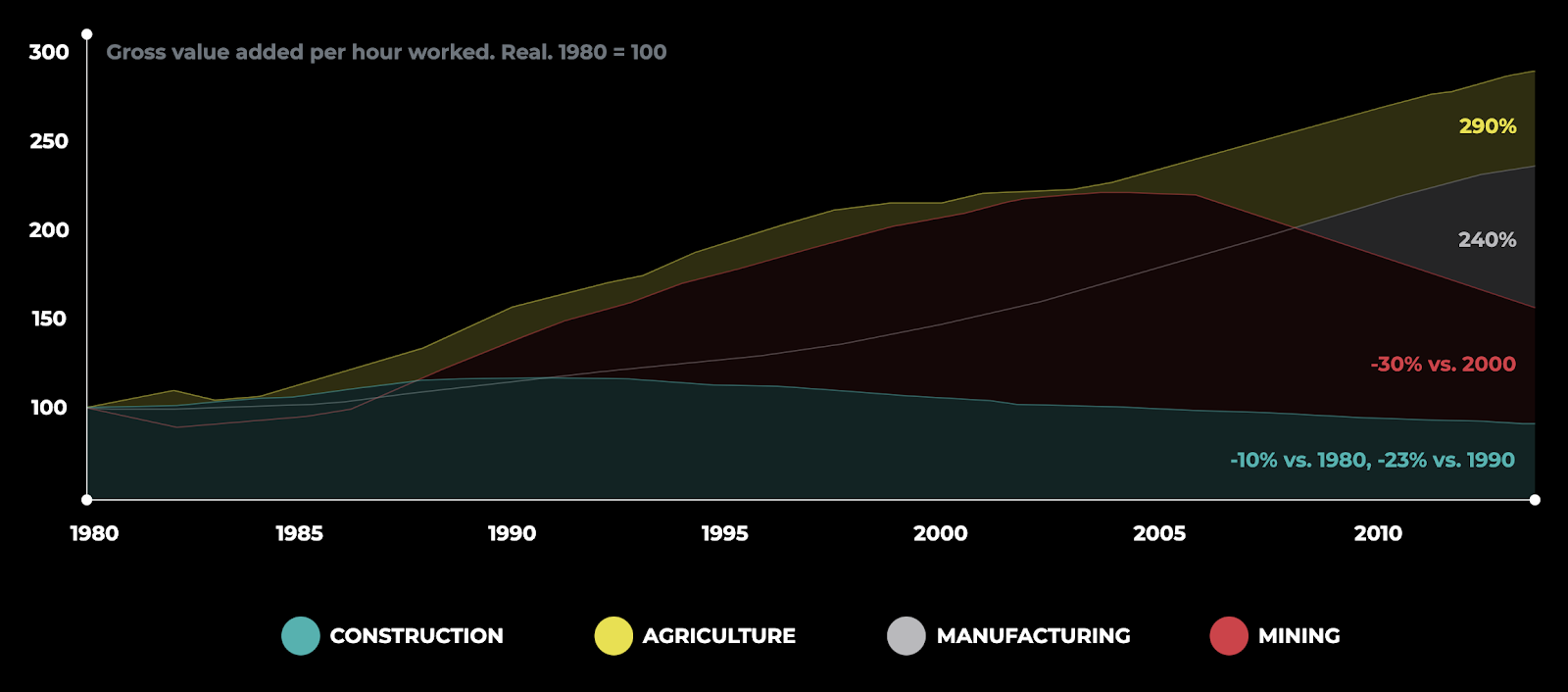
In fact, the productivity gains from the aggregate U.S. economy from 1980-2012 were +309% — and an astounding +675% from the end of WWII to 2012.
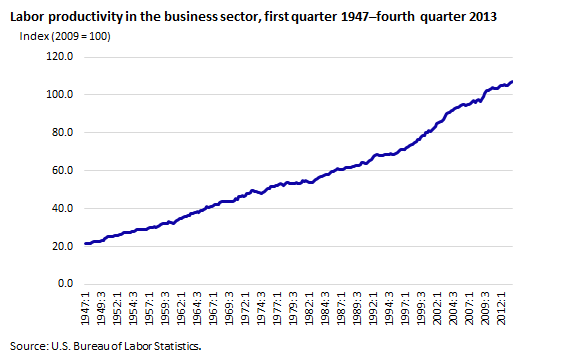
Meanwhile, in the construction industry, we have been going the other way:
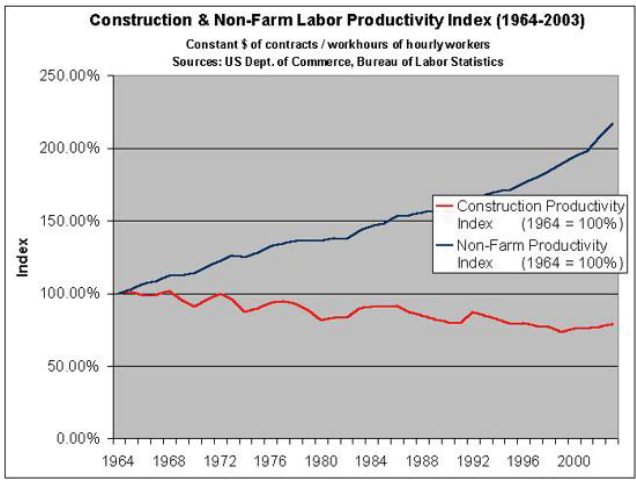
According to the graph from the U.S. Department of Commerce above, construction productivity is roughly 25% less than in 1964 — an even more dramatic stat than measuring from 1980. The effect is higher-than-needed construction costs, which is a major factor in our aging infrastructure.
Of course, we have physical constraints with how much we can lift, push, pull, and carry every day. However, it does not seem logical that we are physically doing 25% less than we did in 1964.
Where are those hours of lost efficiency going?
Another way to think about the efficiency of labor output is how efficient the labor inputs are. In other words, are the productivity tools that contractors are using not giving them the support they need? It turns out that the process of running a contracting business and working on-site has become more and more cumbersome.
Foremen and contractors spend three to five hours every day on manual, repetitive communications.⁵
There are numerous reasons for these lost communication hours everyday — safety protocols, approval processes, waiting for other work to finish, material delays, equipment downtime, etc. Meanwhile, the cost of digital communications has fallen dramatically.
Consider the plummeting cost of computing over the same time period.⁶
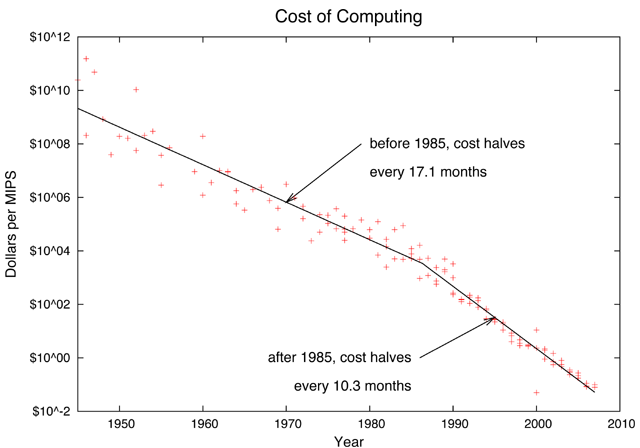
Rapidly falling computing costs are the foundation for the explosion of communication productivity companies, such as Yahoo in the ’90s, Google in the 2000s, and Slack today. These communication tech companies have in turn enabled the emergence of marketplaces, social networks, and advanced research tools.
These factors have fueled the digital revolution that allows us to research at home at any time, buy any retail item online, and connect with anyone in the world. This is what drove the 309% gains in productivity across the entire U.S. economy from 1980-2012.
In a world of communication abundance, we in the construction industry are underserved. And what’s making it worse is that construction companies cannot find the labor they need.

This labor shortage is not for lack of opportunity in the industry. Consider this:
The global construction industry needs to build 13,000 buildings each day between now and 2050 to support an expected population of 7 billion people living in cities (10 billion worldwide).⁷
Something must give. We cannot build what we need to with the current labor shortage and declining productivity. Won’t happen. Two negative trends cannot equal a positive without dramatic change. The disparate macro forces at play are so strong that we can reasonably infer that technology wants to inject itself.
In his book, “What Technology Wants,” Kevin Kelly, the founding executive editor of Wired magazine, describes how technology builds upon itself and can be observed as behaving like a primitive organism:
Each new invention requires the viability of previous inventions to keep going. There is no communication between machines without the extruded copper nerves of electricity … No hammers without saws to cut the handles; no handles without hammers to pound the saw blades. This global-scale, circular, interconnected network of systems, subsystems, machines, pipes, roads, wires, conveyor belts, automobiles, servers and routers, codes, calculators, sensors, archives, activators, collective memory, and power generators — this whole grand contraption of interrelated and interdependent pieces forms a single system.
When scientists began to investigate how this system functioned, they soon noticed something unusual: Large systems of technology often behave like a very primitive organism. Networks, especially electronic networks, exhibit near-biological behavior.”⁸
If technology builds upon itself — and it is best at organizing information and workflows — it wants to make the dramatic impact we need in construction. Just as other industries have done, we need to leverage software to organize information and help reduce supply chain bottlenecks.
Importantly, we need technology to help us shift from a reactive approach to a contractor’s needs to a proactive process of anticipating their needs.
Equipment dealers are the backbone of this industry.
They wake up early to get the machines to the job site on time, take late-night calls from customers when something breaks down, and go the extra mile delivering doughnuts and coffee to the hardworking men and women on-site.
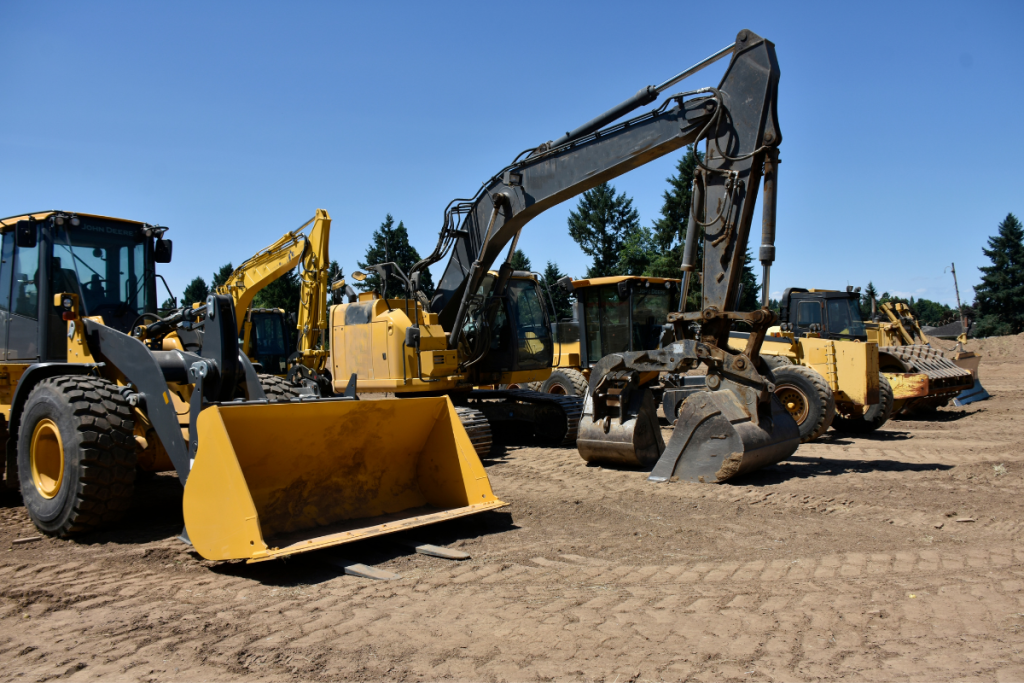
Dealers take pride in the equipment they rent and sell, in the people they serve, and in the infrastructure their equipment helps build. The job is not for the faint of heart, but it is incredibly rewarding.
After years of solving problems for customers, our industry’s professionals have accumulated a wealth of knowledge about their specific equipment and components. This knowledge is very valuable to a contractor when deciding which machine is the right tool for the job or what is needed when a machine breaks down. The local dealer is there to help the purchasing process go smoothly and is by extension a partner in the contractor’s success.
However, this knowledge today is primarily living in the heads of thousands of experts such as service technicians, parts counter reps, territory reps, branch managers, and shop managers. This hard-earned knowledge should be known to the world.
Discover how fleet teams and vendors are joining forces to automate the parts process and bridge the gap between calls and ecommerce.
Furthermore, if a contractor does not personally know an expert to call on a particular matter, the equipment downtime experience can be extremely painful to the bottom line. As Kevin Kelly’s observations tell us, the construction industry wants to find the right parts from the right supplier — but cannot easily do so today. Hence, solving for downtime is a major contributing factor to the three to five hours contractors spend a day on manual, repetitive tasks.
The experience of owning and maintaining equipment should be much more seamless. The answers to countless questions that lead to delays on job sites are known to our industry’s experts. We need to better match their expertise to where it’s needed.
The dealers who will win the future understand this. The expertise of their teams should not depend on customers calling them, but how they proactively help a customer with uptime before a piece of equipment breaks down.
Take EquipmentShare as an example. Brothers Jabbok and Willy Schlacks started the company as a contractor-to-contractor equipment rental platform after noticing how much equipment is owned by contractors and sitting idle. They eventually pivoted the business to focus on owning the end-to-end rental experience and opened rental stores of their own. Today, EquipmentShare has more than 80 locations across the U.S., but they’ve never stopped improving their software foundation and value to customers.
T3, EquipmentShare’s self-described “fleet management OS,” rolled out earlier this year. The idea behind the T3 platform is that contractors have a central place to operate all their fleet management needs, including rentals, fleet analytics, timesheets, and safety and compliance. T3 is certainly an ambitious platform, but underscores that EquipmentShare understands the myriad interrelated pains affecting contractors today. In fact, the Schlacks brothers lived through them as contractors themselves in Columbia, Missouri.
The focus on innovating on behalf of customers and taking a proactive approach to meeting their needs through technology will likely make EquipmentShare a public company one day. Other dealers and rental companies should take note.
But the simple fact remains that no one rental company or dealer can be all things to all contractors. Equipment availability alone requires contractors to work with several different companies.
Another reason why our industry is so fragmented is because we mirror the diversification in the construction industry and specialize in the equipment we know best.
This specialization is an asset. Every piece of equipment has its own issues requiring a spectrum of knowledge all the way down to the component level. The future of heavy equipment maintenance will have a tailored approach to the specific brand and part a customer needs. Through technology, customers should have instant access to the experts behind the counter who know how to diagnose the issue and help.
As the macro trends of the skilled labor shortage, national infrastructure demands, economic growth, and productivity headwinds converge on our industry, what worked in the past for dealers will not work in the future. We need to get more agile.
Our customers should be able to view the equipment they’ve sent to our shops, track work orders, and automatically schedule needed parts. In other words, they can focus on performing excellent work, while we ensure their equipment is running and safe.
As contractors come to rely on this newfound transparency, dealers become a true partner in equipment uptime. Transparency around equipment repairs and costs will enable contractors to make better business decisions about how much an hour of utilization costs per machine, average maintenance costs per equipment brand, and the appropriate time to buy or sell a machine.
Dealers who excel in the future will provide value as partners powered by technology, regardless of the brand of the fleet that a contractor owns.
Consistent performance coupled with giving customers the tools to better manage their business will result in more service work, rentals, and sales. And for those that don’t embrace this vision, there will be a multitude of other dealers willing and able to step up and succeed.
References:
It's time for a change: Legacy parts procurement workflows are costing heavy civil contractors billions in waste each year.
Heavy equipment fleet teams want modern, data-driven approach to inform purchasing decisions and optimize parts and maintenance processes.
The adoption of telematics solutions for construction equipment fleets is accelerating.
Stay up to date with the latest parts and fleet resources from the Gearflow Blog.